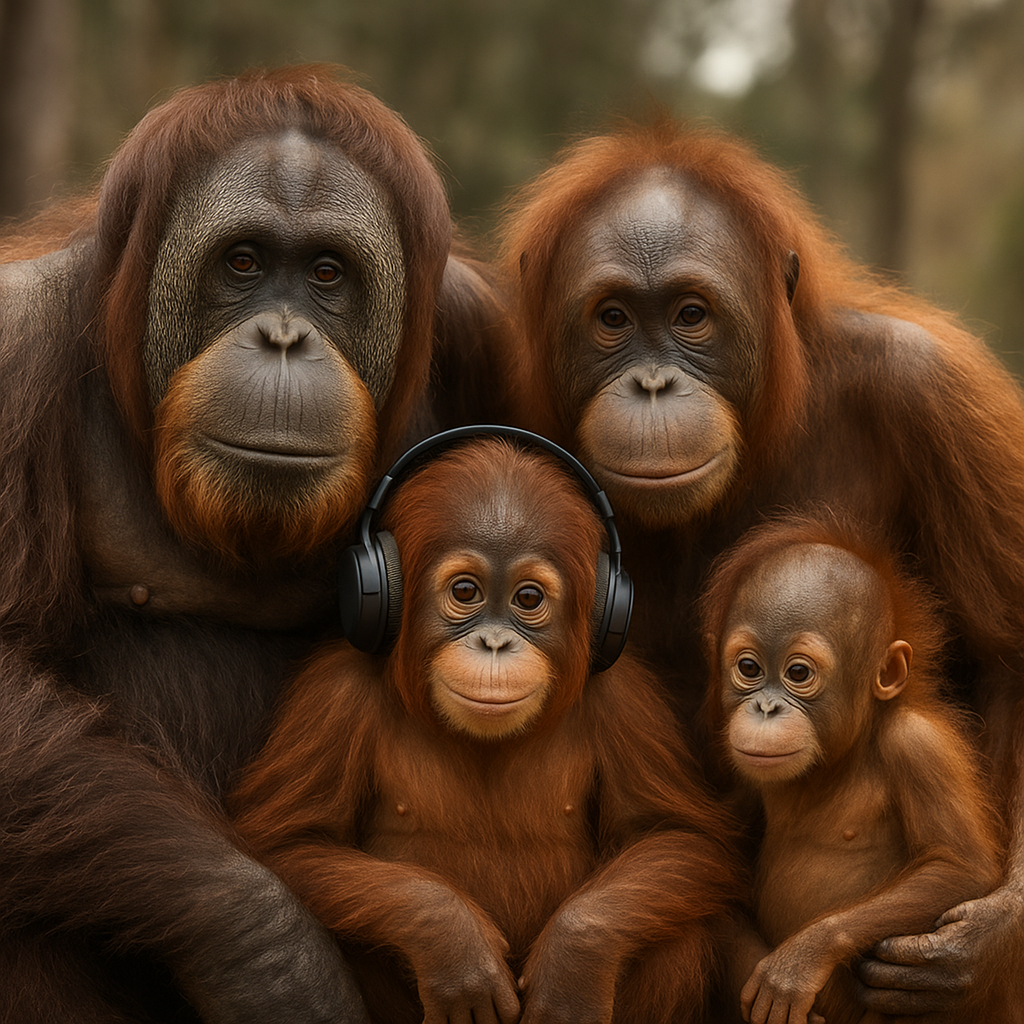Part 1: Four Generations, One Workplace: Leading Multi-age Teams
Generational Differences
In today’s evolving workplace, it’s not unusual to find a team made up of professionals from four different generations—sometimes even five. From Gen Z employees just entering the workforce to Baby Boomers in senior leadership roles, modern teams span an age range of over 50 years. This unprecedented mix of ages brings both rich experience and dynamic energy, but it also creates a unique set of challenges when it comes to communication, management, and collaboration. One such challenge is intergenerational conflict, which can arise from differing expectations, values, and communication styles among team members.
The reality is: generational differences in the workplace aren’t just theoretical—they show up in everything from work styles and communication preferences to how people interpret accountability, autonomy, and leadership. Generational diversity and the varied life experiences of each age group can be both a source of challenge and a powerful opportunity for growth and innovation. For managers and HR leaders tasked with leading multi-age teams, understanding these differences isn’t just a “nice to know”—it’s essential to building a culture that works for everyone.
We’re not talking about pandering to stereotypes or favouring younger generations over older generations. We’re talking about recognising patterns, preferences, and pressures that shape how people show up to work—and adjusting our strategies accordingly.
At Ysobelle Edwards, we work closely with businesses navigating the complexities of a multigenerational workforce, helping them design systems that respect individual differences while driving team-wide alignment. We support organizations in managing a multi generational workforce and creating an inclusive work environment that leverages the strengths of all generations in the workplace. This is especially critical for SMEs, where cohesion, performance, and employee retention are tightly interwoven.
Disclaimer: The generational profiles and insights we share throughout this series are based on large-scale research and observable workplace trends. Not every individual will match their generation’s typical traits. However, recognising broad trends across age groups can offer valuable guidance for anyone working to build inclusive, high-performing teams and to address new challenges that arise as societal values and standards evolve.
The Four Generations Driving Today’s Workforce
1. Baby Boomers (Born 1946–1964)
Who They Are: Baby Boomers represent the most experienced tier of the multigenerational workforce. A typical baby boomer employee is motivated by recognition, stability, and opportunities to share their expertise, often valuing structured environments and clear hierarchies. While many have transitioned into retirement or part-time consultancy roles, a significant number remain in leadership, governance, or specialised advisory positions—especially in sectors like professional services, engineering, and government. As many have reached or are approaching retirement age, this milestone shapes their career decisions, with some choosing to delay retirement or shift into less demanding roles. These older workers often carry deep institutional knowledge and serve as organisational anchors. The values and work ethic of Baby Boomers were strongly influenced by the economic challenges of the Great Depression and the shared experiences of World War II, which fostered resilience, loyalty, and a strong sense of duty.
How They Work: This generation values hierarchy, routine, and face-to-face communication methods. Their approach is shaped by decades of workplace evolution, from analogue to digital, and they tend to prefer clarity, order, and proven systems. Tailored communication—especially respectful, direct language—is key when working with baby boomer employees.
Motivated By: Job security, pension benefits, being respected for their expertise, and contributing meaningful guidance. They value legacy and impact over novelty.
How They See the Workplace: A place of structure, discipline, and commitment. For many Boomers, success was earned through long hours, loyalty, and a sense of duty. The traditional belief in paying one's dues shapes their expectations for career progression, emphasizing experience and steady advancement. The idea of flexible work arrangements may feel unfamiliar or even unnecessary unless it’s framed around contribution rather than convenience.
2. Generation X (Born 1965–1980)
Who They Are: Often referred to as the “quiet backbone” of organisations, Generation X professionals are the bridge between analogue and digital eras. Many hold operational or strategic leadership roles and manage teams that span both older generations and younger employees. They bring stability, realism, and a hands-off leadership style that values output over optics.
How They Work: Highly independent and often sceptical of corporate hype, Gen Xers dislike being micromanaged. They favour efficient and direct communication—email over meetings, facts over fluff. They’re often early adopters of remote work and flexible work arrangements, with flexible schedules being a key motivator for Gen X due to their focus on work-life balance. Gen X employees may have unique work preferences compared to other generations, often valuing autonomy and efficiency in their approach.
Motivated By: Work-life balance, autonomy, and practical benefits such as strong healthcare, retirement plans, and family support. They tend to be strategic thinkers who weigh risk carefully.
How They See the Workplace: As a space for performance, ownership, and autonomy. Gen X doesn’t expect praise for showing up—they expect freedom to execute, space to think, and clarity on expectations. They value professional development that’s relevant, not performative.
3. Millennials / Gen Y (Born 1981–1996)
Who They Are: Millennials, also known as Generation Y, now form the largest generation in the workplace. Many are no longer the “youngest” but rather occupy pivotal leadership and mid-senior management roles, especially within startups, creative industries, and digital-first businesses. Raised during the rise of the internet and shaped by the Recession and the economic hardship that followed, Generation Y bridge the gap between older generations and younger workers, influencing both with a mix of tech-savviness and emotional intelligence.
How They Work: Collaborative, ambitious, and focused on meaningful work over titles. Millennials are feedback-driven and thrive in environments where communication preferences are open, transparent, and tech-enabled. Regular feedback is essential for their professional growth, and they often prefer instant messaging as a primary communication tool to bridge generational gaps. They value flexible work arrangements, hybrid roles, and outcome-based management styles. They’re typically more vocal about values and expect employers to walk the talk when it comes to diversity, inclusion, and purpose.
Motivated By: Learning opportunities, career growth, visible impact, and professional development pathways that allow them to evolve with their roles. Access to career development opportunities is a key motivator, influencing whether they remain in their current job or decide to switch jobs. They want their work to align with personal values and social consciousness—not just deliver a pay cheque.
How They See the Workplace: A space for growth, recognition, and tailored communication. They believe a company’s mission should be more than a tagline—it should shape decisions, leadership, and how people are treated. This generation thrives when the workplace becomes an ecosystem for development, collaboration, and shared success.
4. Generation Z (Born 1997–2012)
Who They Are: Gen Z is the newest generation in the workforce and arguably the most socially and digitally immersed. As digital natives, they are innately comfortable with new technology and quick to adopt new tools that enhance productivity and collaboration. Shaped by social media, the pandemic, economic precarity, and climate anxiety, they bring urgency, adaptability, and digital fluency to their work. For many Gen Z employees, their professional identity is deeply intertwined with personal values, technology use, and the demand for authentic, inclusive environments.
How They Work: This group is fast-moving, entrepreneurial, and highly values-driven. They expect digital tools, collaborative platforms, and progressive communication styles from day one. Video calls are a preferred method of communication, reflecting their comfort with remote and virtual interactions. Flexible work arrangements are not a perk—they’re a baseline. They expect transparency from employers and are more likely to disengage quickly if expectations around equity, feedback, or autonomy aren’t met. Psychological safety is crucial for Gen Z, as they seek workplaces where they can openly share ideas and concerns without fear of judgment.
Motivated By: Authenticity, purpose, diversity, and the opportunity for rapid progression. They are drawn to employers who embrace change, offer personalised development, and involve them in decision-making. Work/life balance is especially important to Gen Z, particularly as they consider raising families and seek flexibility to support their personal lives.
How They See the Workplace: Not as a destination, but as a platform for identity and creativity. Gen Z views work as part of their personal story—where ideas are tested, boundaries are pushed, and real impact is possible. Unlike older workers, they value adaptability over tradition and are highly attuned to the communication gap between hierarchical authority and collaborative leadership.
Why This Matters for People Management
Managing a multigenerational workforce means managing competing expectations, communication preferences, and career mindsets—all under one roof. Whether you’re overseeing younger employees or engaging older generations, ignoring these dynamics leads to disengagement, high turnover, and missed potential. Managing a multi generational team requires bridging the generational gap to foster understanding and leverage the unique strengths of each age group. But when you embrace generational differences, you unlock better teamwork, sharper leadership, and smarter growth.
Here’s what happens when you manage with generational insight:
Boost team cohesion by understanding what motivates each age group—and what frustrates them.
Adapt your communication style to reflect real communication preferences—Gen Z may want asynchronous voice notes, Boomers may prefer face-to-face or structured updates.
Design smarter HR policies that reflect generational needs—from professional development opportunities to hybrid work setups.
Close the generation gap by encouraging knowledge sharing between older workers and digital-native hires, and learning from other generations.
Retain top talent by building a workplace that feels inclusive across the board—not just age-diverse on paper.
Make decisions that make sense for the whole team by considering the perspectives and needs of all generations.
Great managers recognise that people don’t come to work as blank slates—they come shaped by their generation, their context, and their expectations. When you manage accordingly, everyone wins.
Up Next in the Series
In Part 2, we’ll go deeper into what drives each generation, from core values to performance expectations. We’ll explore:
• How to keep a Gen Z motivated when they’re craving autonomy
• Why Gen Xers often resist open-plan offices
• What kind of recognition resonates with Boomers vs Millennials
Let’s talk about how to future-proof your people strategy. We’ll help you navigate generational dynamics while meeting compliance standards, raising conduct expectations, and building a workplace that stands up to scrutiny.
FAQ: Navigating the Multigenerational Workforce
1. What is a multigenerational workforce, and why does it matter in 2025?
A multigenerational workforce refers to a team made up of employees from at least three—and often four or five—different age groups. In 2025, this includes Baby Boomers, Gen X, Millennials, and Gen Z. It matters because each group brings distinct experiences, values, and expectations around work. When managed well, this diversity fuels creativity, problem-solving, and resilience. When ignored, it leads to friction, disengagement, and missed growth opportunities. Culture, communication, and clarity become the glue that holds it all together.
2. What are the key differences between Baby Boomers, Gen X, Millennials, and Gen Z at work?
Baby Boomers tend to value structure, loyalty, and long-term contribution. Gen X brings independence, realism, and a “don’t micromanage me” attitude. Millennials crave purpose, feedback, and growth opportunities. Gen Z wants transparency, digital-native environments, and fast-tracked progression. These aren’t stereotypes—they’re patterns that reflect what shaped each generation. Recognising these differences isn’t about changing everything for everyone, it’s about building systems that respect how people work best.
3. How should businesses adapt communication styles across generations?
You don’t need to write four versions of every memo. But understanding communication preferences is critical. Boomers may prefer face-to-face meetings, phone calls, or clear, structured emails. Millennials might appreciate Slack updates, while Gen Z leans into voice notes and async video. The key isn’t over-customisation—it’s intentional clarity. Say what matters, say it plainly, and be open to asking, “Is this working for you?” That alone bridges most communication gaps and highlights the importance of effective communication in connecting different generations.
4. What does successful leadership look like in a multigenerational team?
It’s not about being everything to everyone—it’s about being consistent, curious, and adaptable. Great leaders clarify expectations, model inclusive behaviour, and spot where friction is creeping in. They know when to slow down for context, when to speed up for impact, and how to challenge assumptions without undermining confidence. Leading a multi generational team is a balancing act: build enough structure to support older generations, enough flexibility to retain younger ones, and enough accountability to drive performance across the board. Bridging the generational gap is essential for leaders to foster understanding, leverage diverse skills, and create a cohesive, productive environment.
5. What are common causes of generational conflict in the workplace?
Generational tension usually stems from unspoken assumptions: what “being professional” means, how quickly a promotion should happen, or whether “working late” signals commitment or poor planning. Misunderstandings around tone, pace, or feedback style can snowball if not addressed. The fix isn’t just HR training—it’s clarity. Build shared definitions of key terms like “ownership,” “urgency,” or “flexibility,” and reinforce them consistently across teams.
6. How can companies support both older and younger workers without favouritism?
Balance comes from applying consistent principles, not one-size-fits-all solutions. Older workers may value stability, clear expectations, and long-term planning. Younger employees often seek flexibility, feedback loops, and visible progression. The most effective approach is to define what “support” means by role, not by age. Pair this with open feedback channels, and you’ll avoid accusations of favouritism while building policies that flex to real business needs.
7. Is it better to focus on values or benefits when designing HR policies for all age groups?
You need both. Values create alignment; benefits deliver proof. Millennials and Gen Z want to see if your stated values show up in how people are treated. Gen X and Boomers want to know whether the organisation supports financial stability, work-life balance, and legacy-building. HR policies that are too generic feel performative. When designing benefits and values, it's important to recognize different preferences across generations to ensure policies are inclusive and relevant. Policies built with input from across age groups feel intentional—and that’s what earns trust.
8. What role does professional development play in managing generational differences?
Development is often where generational misalignment shows up. Gen Z might expect monthly growth plans. Boomers may view “development” as long-term mentorship. Gen X often want self-directed upskilling on their own time. The smart move is to offer choice: self-paced, cohort-based, or mentorship-focused. Development doesn’t need to be flashy—but it must feel relevant, respected, and accessible. If it’s not, it becomes a retention risk.
9. How do generational traits affect teamwork and collaboration?
Teams work better when they understand not just what each member brings, but why they show up the way they do. For example, a Boomer might equate silence with agreement, while a Millennial expects vocal brainstorming. Gen Z may default to online collaboration tools, while Gen X prefers clarity over creativity. These aren’t right or wrong—just different. Team performance improves when leaders decode these signals and set norms that accommodate different working styles without diluting accountability.
10. Should employers change onboarding processes for different generations?
Not the content—but absolutely the delivery. Gen Z may appreciate mobile-first microlearning and Slack-based onboarding. Millennials may prefer structured timelines and peer-to-peer buddy systems. Boomers and Gen X often want clear documentation, role clarity, and expectations from day one. A well-designed onboarding experience won’t assume everyone learns the same way. It will give options, set clear outcomes, and check in often—not just in the first week, but throughout the first 90 days.
11. What’s one overlooked factor in managing a multigenerational workforce?
Legacy knowledge. We often focus on adapting to younger generations, but we underestimate the risk of losing institutional memory when older workers leave. Gen Z may bring energy, but Boomers often hold the operational history, client nuance, or undocumented workarounds that keep things running. Capture that. Build mentoring bridges. Prioritise knowledge sharing before it’s too late. That’s how you turn transition into transformation.
12. How can businesses prepare now for a future with five generations at work?
Start by building resilient systems—not just policies that flex, but cultures that evolve. Standardise what matters (like communication cadence or performance metrics), personalise where it counts (benefits, development), and measure what’s working across age groups. Invest in manager training, documentation, and cross-generational knowledge flow. Businesses that prepare now will not only attract broader talent—they’ll scale without friction as workforce demographics shift again.



